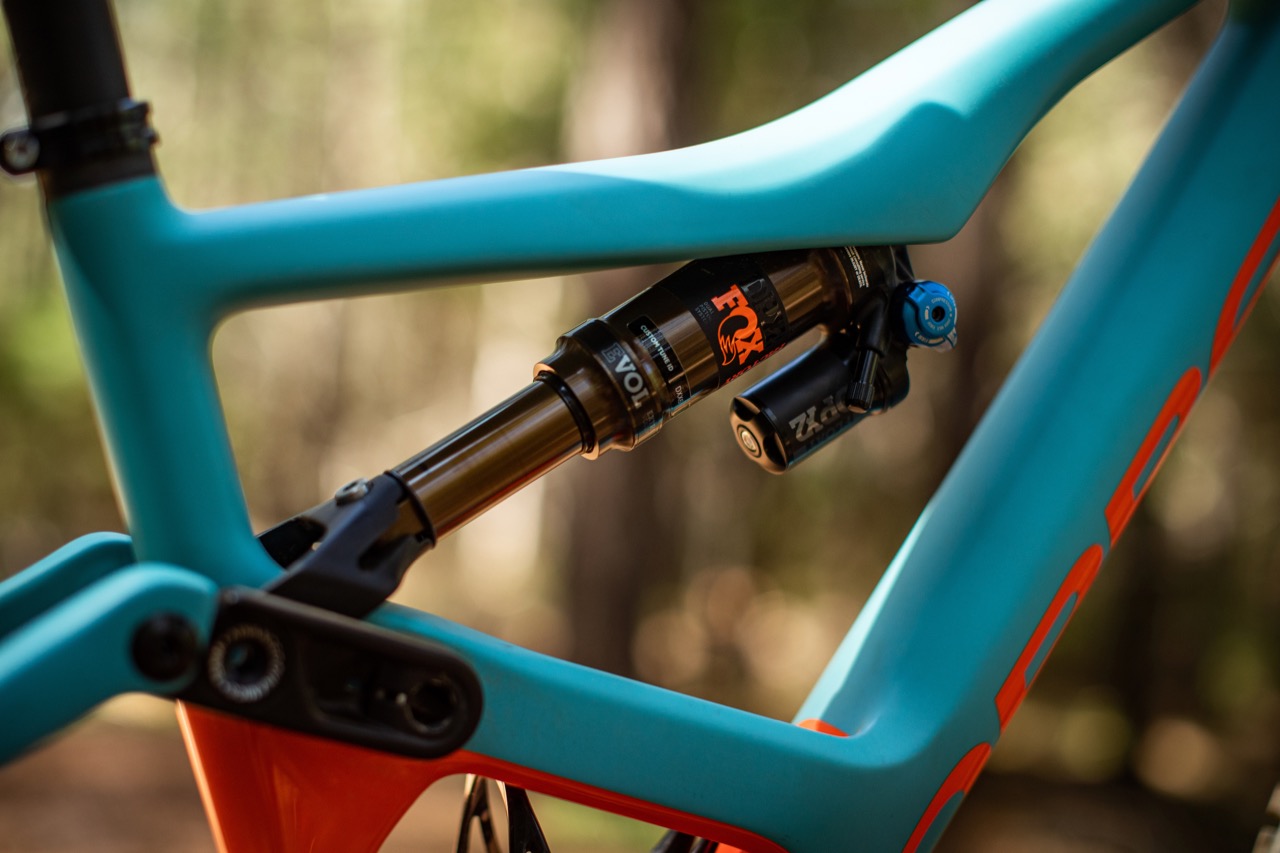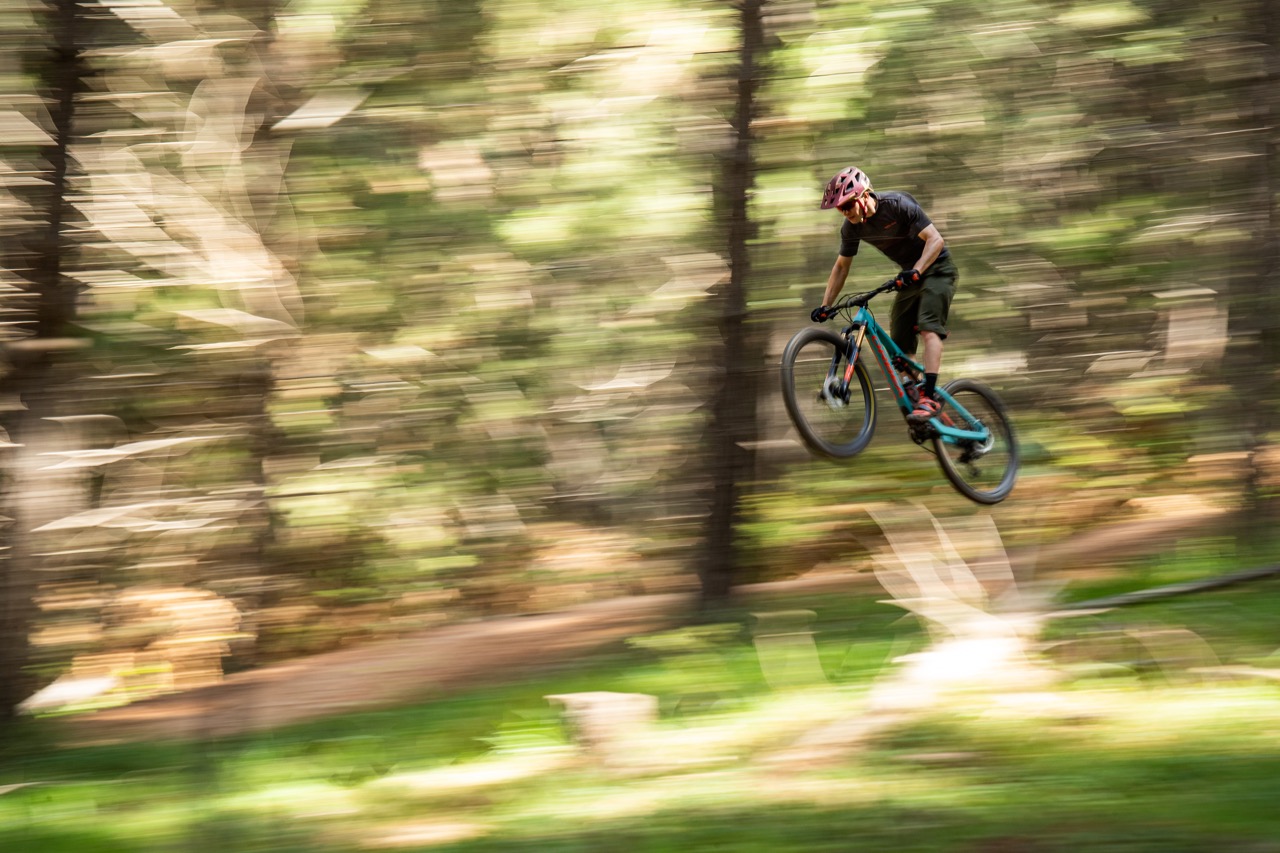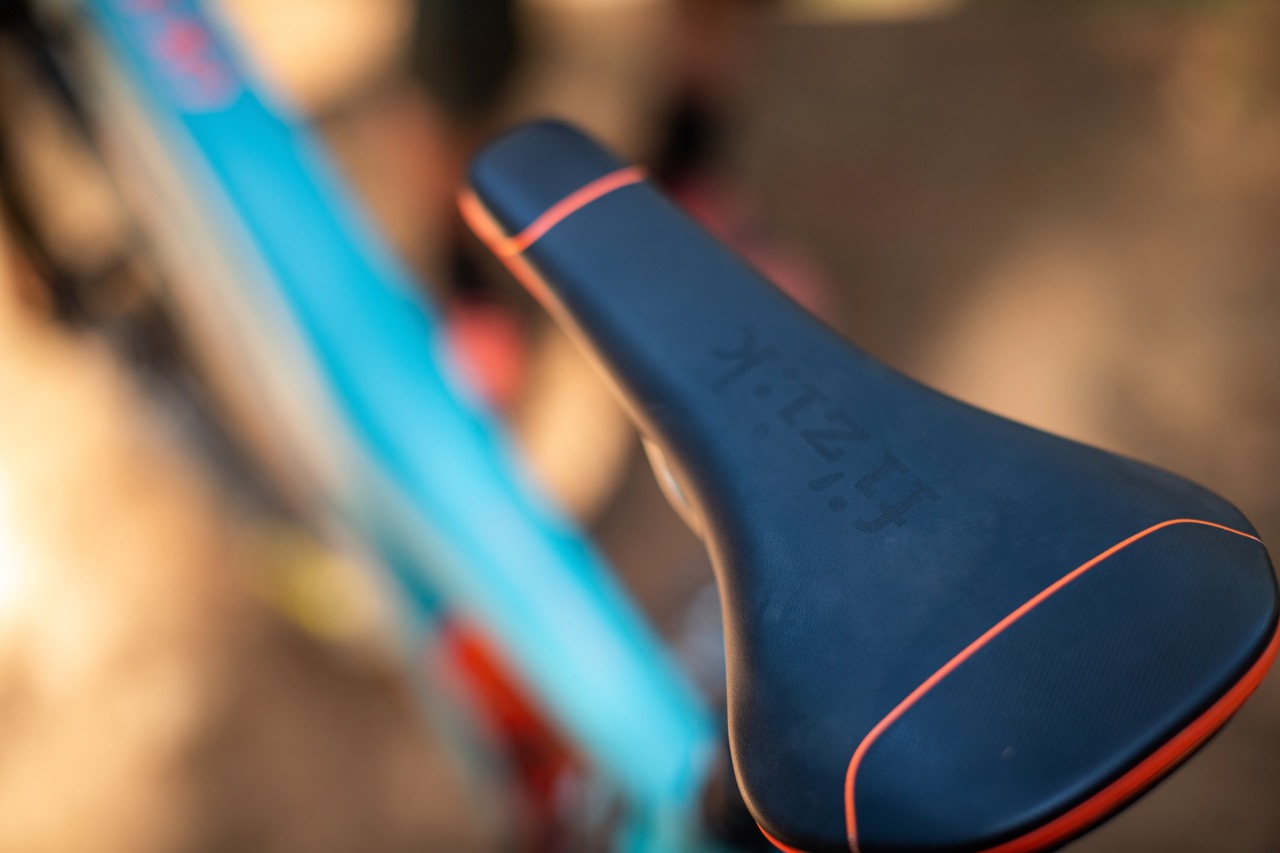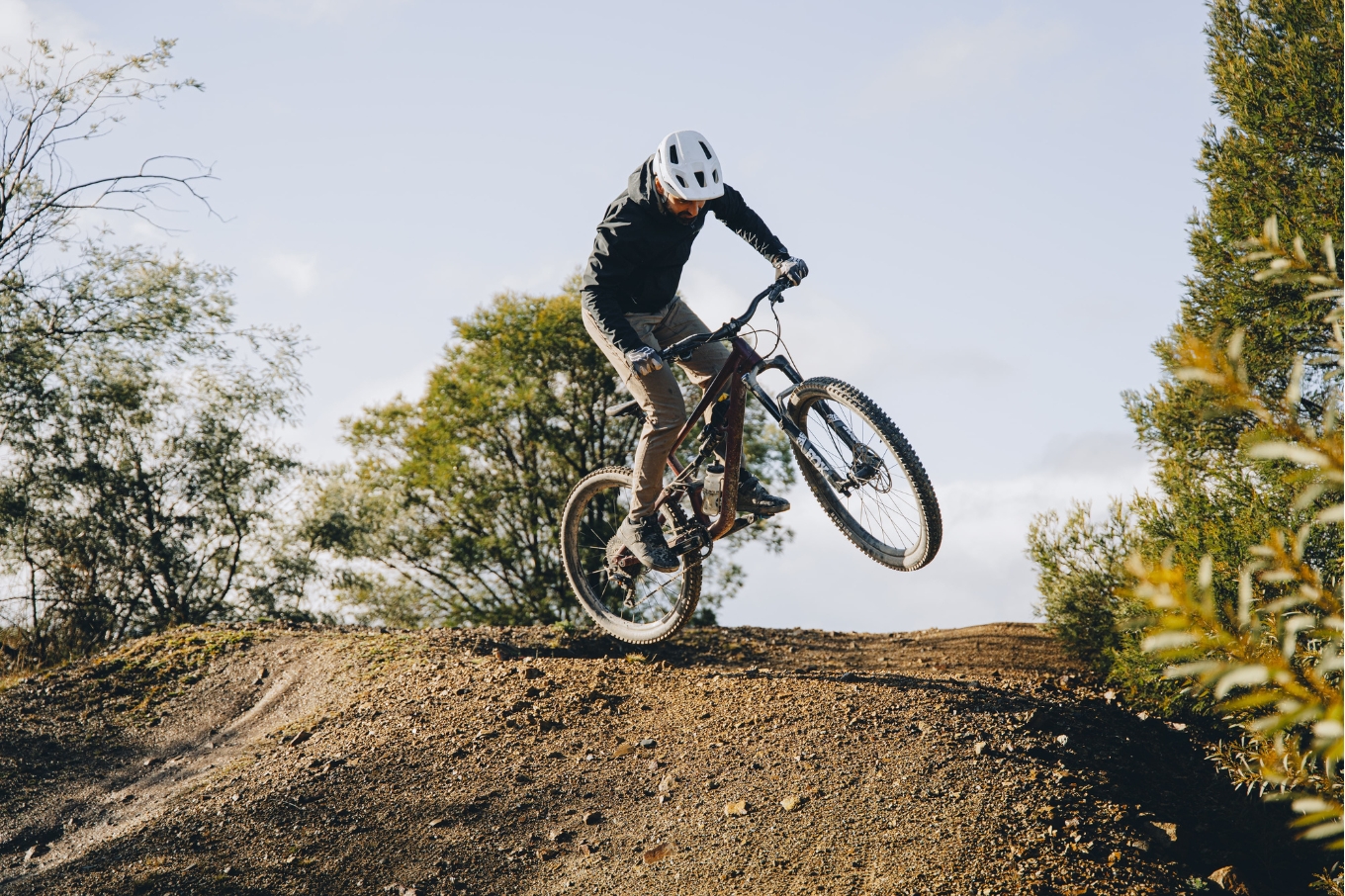TESTED: Orbea Occam M10
Testing the trail focused Orbea Occam M10!
Words: Sebastian Jayne Photos: Tim Bardsley-Smith
Orbea has a fascinating history that dates back to the latter half of the 19th century. The company from the Basque Country region between Spain and France produced firearms under the name Orbea Brothers. A bit of an odd start for a bike company at first glance, but really the two are quite similar. Precision manufacturing of steel tubing. Sound familiar?
During the interwar period and following increasing weapons restrictions throughout peacetime Europe, Orbea made the full switch to producing bicycles in 1930. Skipping ahead, the economic situation in Spain during the 1960s hit Orbea hard, and on the precipice of bankruptcy, the passion for the company shone through and the workers of Orbea purchased the company to form a cooperative.

Fast forward a bit more, and the knowledge and passion of the previous 100+ years developed some of the finest bikes today. In the 2008 Olympics, Samuel Sanchez won the road race while a little-known mountain biker, Julien Absalon, won gold in the MTB race, both riding Orbeas! Surely there is something poetic in the transformation from weapons manufacturer to developing something as enjoyable as bicycles. Now we have bikes like the enduro focused Rallon and XC racer Oiz. Sitting in between lays the Occam, a trail focused bike looking to go wherever the rider wishes.
Initial Impressions
The Orbea Occam on test was the middle of three variants: the M-LTD, M10 tested and the M30. Picking the model is only step one though, as Orbea offers customisation including their MyO paint customisation and select part customisation. The paint customisation lets you change the main frame colour along with the downtube logo and lower seat tube/BB area. We had the stock blue/orange colourway on test, which looks ridiculously good in person and on paper.

The second part of the customisation is the parts selection that lets you change fork, wheels, tyres, seatpost and front hub from a couple of options. Each allowing you to tailor the ride to meet your needs. The fork options are between a Fox 34 140mm, which we tested, and a Fox 36 150mm. The wheels choice is between the very trail ‘sturdy’ aluminium DT Swiss XM1650 Spline 29” (tested) and, interestingly, the much lighter, and more expensive, carbon DT Swiss XMC 1200 Spline 29”, which has been used on the XC World Cup circuit. The tyre options provided a choice between the Maxxis Minion DHF/DHR front and rear specific tyres or the more rolling friendly Maxxis High Roller II and Rekon combo that we tested. The seatpost options let you change the amount of drop and are either an in-house Orbea dropper (tested) or Crank Brothers Highline in 125mm.
Our combination was:
– Fox 34 140mm Fork
– Heavy duty trail XM1650 wheels
– ‘Fast rolling’ tyre combo, Maxxis High Roller II and Rekon

Other notable parts of the build are the good-looking carbon Race Face Next R and Shimano XT M8100 group set with the 4-pot XT M8120 trail brakes. The customisation options are pretty neat and let you lean the Occam either towards the enduro/heavy trail end of the ‘trail’ spectrum or more to the lightweight/all-day pedalling platform or a mix right in the middle, which was our setup.
Photographer: Tim Bardsley-Smith
Tester: Sebastian Jayne
Riding Experience: Over 8 years racing national and international XCO
Generally Rides: Norco Revolver FS 29
Height: 175cm
Weight: 65kg
Bike Test Track: Bright, Vic
In terms of geometry, the Occam doesn’t do anything drastic compared to the competition. The chainstays and reach are on the longer side which pushes the wheelbase out, but that’s neither bad nor good. The Occam is slung low with a BB drop of 35mm, which is a measure of where the bottom bracket sits in relation to the axels. Trail bikes can range from the mid-30s to around 15mm.

Overall, the Occam M10 looks polished. Not in the shiny way but in the everything was thought of way. The lines are smooth, and the finishings are what you’d expect from an $8000+ bike. The single sidearm through the middle of the bike looks cool, I’m sure it has something to do with structural support/weight savings, but I don’t know about that stuff, so it just looks cool to me. Ultimately, I was really interested to see how the Occam rode and whether the cross match of parts would bring out the best of the Occam or whether I would opt for a different kit for the riding I like doing.
On the Trail
The bulk of my test rides had me riding up and descending down a mix of flow/XC/enduro trails and DH tracks. The trail bike category aims to cover a very wide spectrum, which is why Orbea’s part customisation is good because different riders will tend to fall on one end of the spectrum depending where the bulk of their riding is done. Someone riding predominantly flatter trails or easier descending trails might opt for the lighter weight and 140mm suspension option while someone smashing DH and enduro laps but still needs to ride up will lean towards the heavier duty 150mm option.

The start of testing meant riding up to the trails and the Occam performed well. Tapping out a tempo up a climb doesn’t really stress a bike like this but it can stress a rider having to lug up a heavy trail bike. Thankfully the Occam is very light with a full carbon frame and light finishing parts, even though we were running the heavier XM1650 wheel set. The fast rolling tread also helped, and the seat was a standout, which I usually don’t say in tests as it’s a very personal choice, but the Fizik Taiga suited me. With the fork and shock locked out, I was very comfortable and could see the benefits of buying a trail bike over an enduro bike if I was going to be riding up to the trails constantly.

One notable plus was the sound. As mentioned, the finish of the Occam is polished and out on the trails this shows as being one of the quietest bikes I have ever ridden. No cable rattle, no chain slap thanks to the ridged chainstay protector and no ‘random’ rattles or sounds that other bikes give off. The smooth and almost silent DT Swiss ratchet aids in the silent running. Really loud DT star ratchets tend to just be screaming for grease.
Transferring around to the tops of each trail was a breeze compared to a bigger enduro bike. One big plus was the pedalling platform, which was excellent with minimal pedal bob even with the Fox DPX2 in full-open. Most non-descending riding was done in the trail mode, which really let you work the carbon frame to get you to the top of the next descent.

Okay, enough with the climbing nonsense, time to descend! The first trail was a steep trail descent with sharp corners but not an enduro trail. The first thing I noticed was how little traction I had on the rear Maxxis Rekon. Part of it was definitely down to not knowing the bike but as the test went on, the Rekon did let the bike down. It’s a good tyre but as I started to push the Occam into steeper and rougher trails and then in the wet, I was constantly fighting for rear grip unless I was in the best conditions.

What I wasn’t fighting against was the Occam’s capabilities. Even with the smaller 140mm fork the Occam was smashing any descent from the enduro descents to DH trails of Bright. For me, the Occam’s capabilities came down to the frame and its geometry. Everything seemed to hit a ‘trail’ sweet spot. The carbon frame and carbon bars gave off a great feel on rough trails that kept things composed while still remaining stiff when I got too adventurous. There was no unwanted flex or funniness, which also goes for the aluminium XM1650 wheel set. The geometry always had me in a good position whether I was climbing, traversing or descending the steepest trails.

The Occam was most at home on the descents and the geometry really lent itself to this style of riding over more mellow terrain. At some steeper points, I was wishing for the 150mm fork with bigger stanchions to let me rip a bit harder into steep chutes or corners, but overall I was still very much in control. The Fox 34 felt great at the baseline settings as did the DPX2 shock. The lightness of the frame lent itself to being flicked around the trails and over obstacles especially on the XC descents. While the geometry was slack, it wasn’t like an enduro bike on the easier descents, so I was still able to attack and not feel like I was muscling the bike along.

The final trail was the Shred Kelly flow trail in Bright. Filled with lots of tall berms and jumps on super smooth packed dirt. I set the suspension to the firmer trail setting to give me a better platform to push into the berms and jumps, which really isolated the feelings of the frame. Without the super plush travel, I could feel the stiffness of the frame through the berms and liked the overall feel that the Occam frame provided – Orbea have really got this bike dialled.
Our take
I was really impressed by the Occam and it showed itself a very ‘descendy’ trail bike. It was happiest when pointed downhill, but it did handle the rest admirably. Our test bike landed in the middle of the trail spectrum and parts customisation and this showed on the test as being confused at times. The tyres wanted to keep things chilled but everything else wanted to send it. If you are looking at this bike, I would think about where on the spectrum your riding lies and use the MyO options accordingly.

If you’re hitting flow trails and tougher XC descents, then the lighter build would be best although it will cost more. You can still hit the odd very steep and rough descent, but you’d be happy most of the time on your regular rides. But if you are shuttling every weekend and riding up to rough descents during the week, go for the 150mm and heavier tyres to really unlock the Occam’s potential. It will still take you to the top of climbs better than a full blown enduro rig, but when you are shuttling it will be there for you when you send it into a double black diamond DH trail.

Orbea Occam M10
Brand Orbea
Model Occam M10
RRP $8299
Weight 13.2kg
From bikebox.com.au
Available Sizes S, M (Tested), L, XL
Frame Material Carbon
Fork Fox 34 Float Factory 140
Shock Fox Factory DPX2 custom tune
Shifter Shimano XT M8100 12sp
Derailleur Shimano XT M8100 12sp
Crank Shimano XT M8100, 170mm 32t
Chain Shimano M7100
Cassette Shimano XT M8100 10-51t 12sp

Wheel set DT Swiss XM-1650 Spline 30mm
Tyres Maxxis High Roller II 2.50″ front, Maxxis Rekon 2.40″ rear

Brakes Shimano XT M8120 180/180mm
Stem Race Face Aeffect R 35mm
Handlebars Race Face Next R 35 20mm Rise 780mm
Seatpost OC2 Dropper 31.6mm (Tested)
Saddle Fizik Taiga K:ium rail







